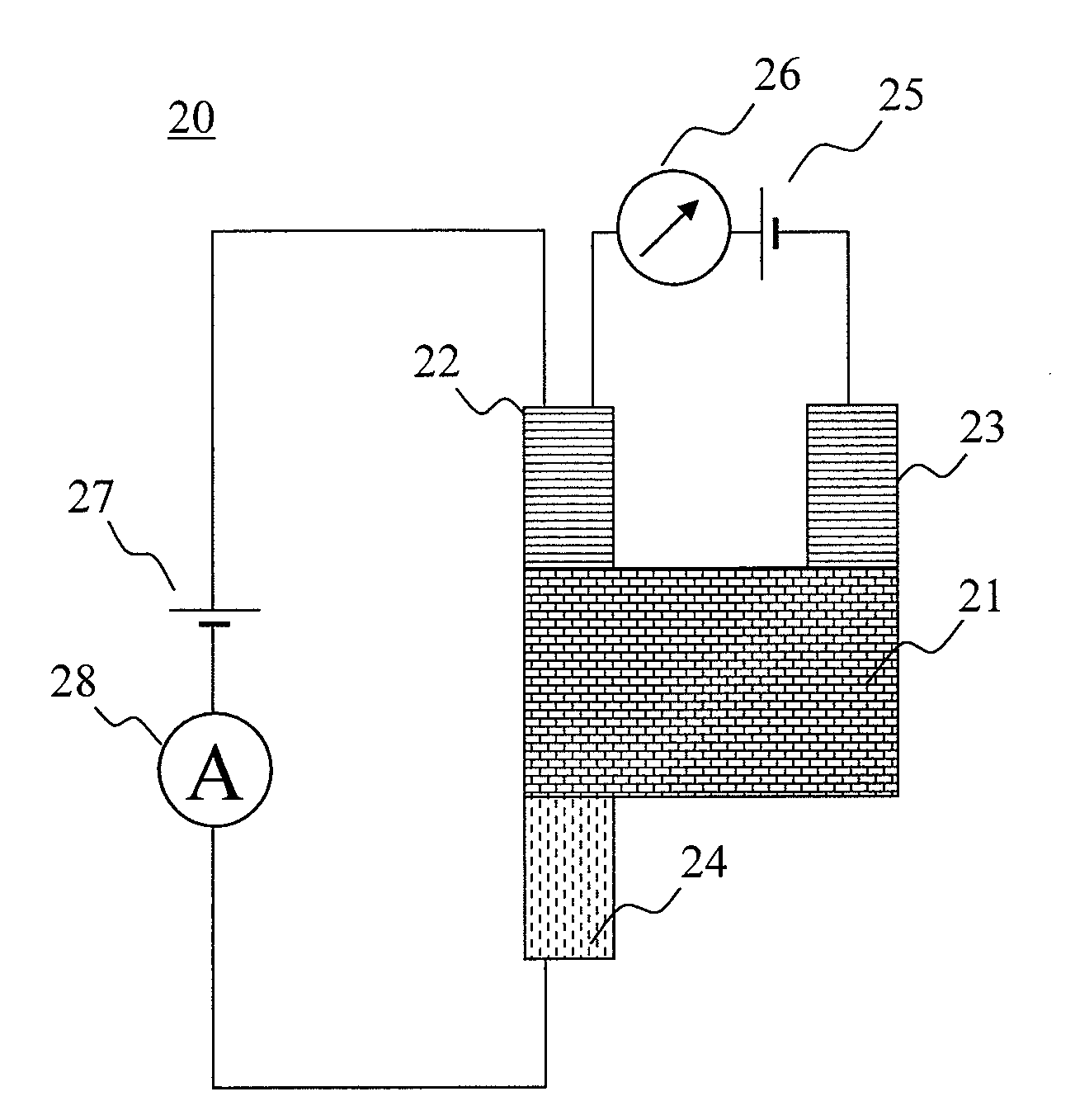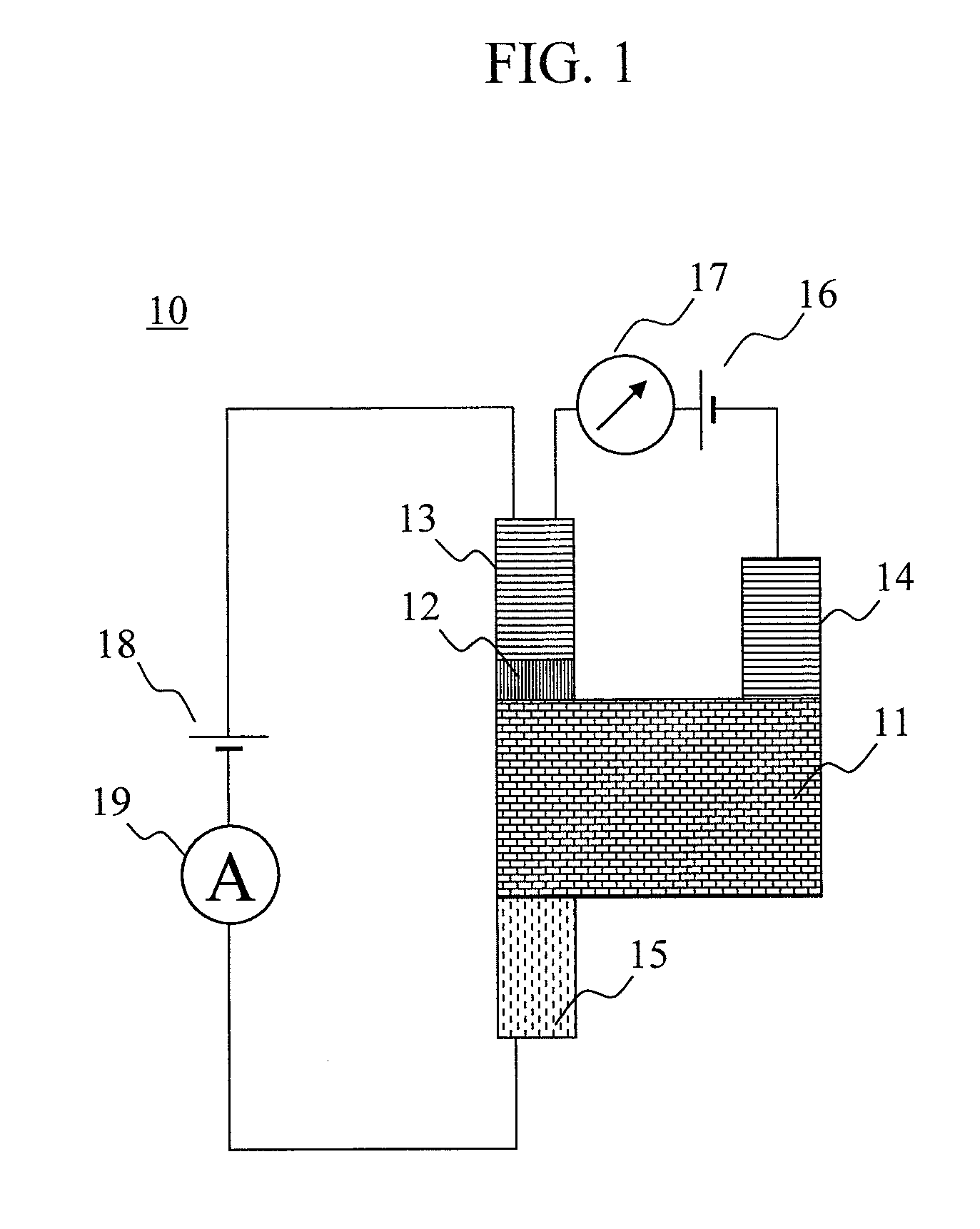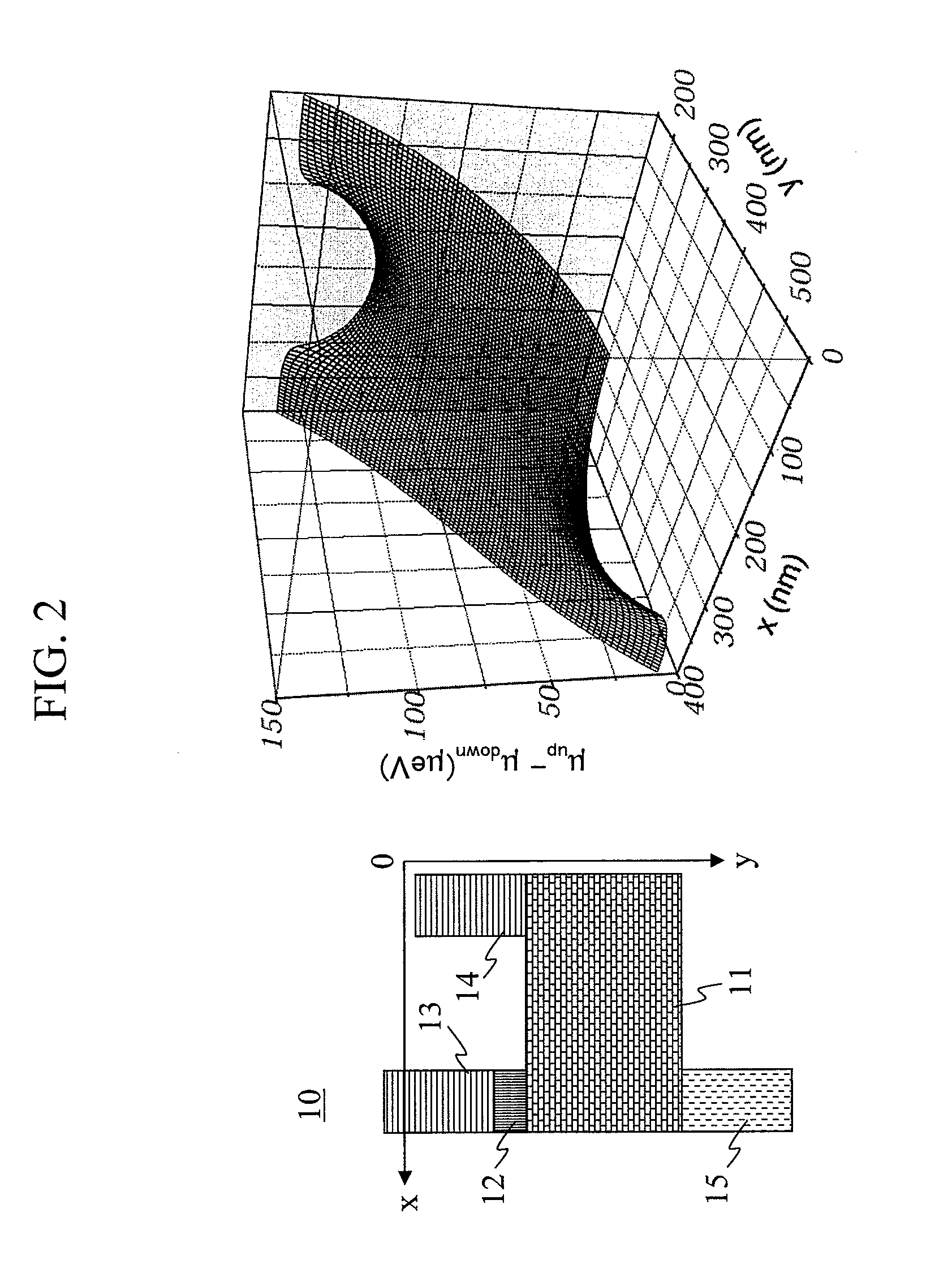Magnetic memory cell and magnetic memory device
a magnetic memory and memory cell technology, applied in static storage, digital storage, instruments, etc., can solve the problems of increasing line current and power consumption, narrowing the effective reversal magnetic field conditions, and reducing the size of the memory cell, so as to achieve a large current density, suppress heat fluctuations of the magnetization free terminal due to joule heat, and carry out stably
- Summary
- Abstract
- Description
- Claims
- Application Information
AI Technical Summary
Benefits of technology
Problems solved by technology
Method used
Image
Examples
Embodiment Construction
[0022]With reference to the drawings, an embodiment of the present invention will be described below.
Application 1 to Solid State Memory Cell
[0023]FIG. 1 is a view showing a planar structure of a magnetic memory cell 10 according to the present invention. An aluminum (Al) island (non-magnetic region) 11 having a width of 400 nm and a length of 400 nm is prepared by use of a standard electron-beam lithography technology, and a portion 12 of the Al island 11 is oxidized by use of a lift-off technique. Thereafter, a first magnetization pinned terminal 13 made of a Co thin wire having a width of 50 nm is connected to the oxidized portion 12 of the Al island so as to form a tunnel junction. Meanwhile, a second magnetization pinned terminal 14 made of a Co thin wire having a width of 100 nm and a magnetization free terminal 15 made of a permalloy (Py) thin wire having a width of 50 nm are connected to the Al island 11. In this case, the Al island 11, the magnetization pinned terminals 13 ...
PUM
 Login to View More
Login to View More Abstract
Description
Claims
Application Information
 Login to View More
Login to View More - R&D
- Intellectual Property
- Life Sciences
- Materials
- Tech Scout
- Unparalleled Data Quality
- Higher Quality Content
- 60% Fewer Hallucinations
Browse by: Latest US Patents, China's latest patents, Technical Efficacy Thesaurus, Application Domain, Technology Topic, Popular Technical Reports.
© 2025 PatSnap. All rights reserved.Legal|Privacy policy|Modern Slavery Act Transparency Statement|Sitemap|About US| Contact US: help@patsnap.com



